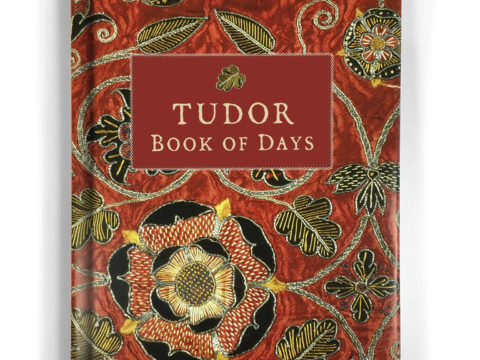Regent Moray: Life Story
Chapter 14 : Assassination
No matter whom Mary had chosen to marry, there would have been difficulties with England, with her courtiers and with Moray, but Darnley’s own character, which quickly became apparent to everyone, including the Queen, was a greater hindrance to the success of the match than any displeasure of her nobles.
By October 1565, the honeymoon had already worn off, and the two were quarrelling. In particular, they argued over who should be Lieutenant in the Borders – a role previously filled by Moray. Mary wished to appoint the Earl of Bothwell, whilst Darnley argued for his father, Lennox, to receive the commission. Nevertheless, Darnley had completed at least part of his side of the bargain, and by December it was known that Mary was pregnant.
Mary, having had every success in 1565, was unaware of the troubles about to mount up on multiple fronts. Flexing her new-found muscles and determined to deal with Moray and the rest of the rebels, she summoned a Parliament for Spring 1566, with a view to putting the forfeit of their lands into practice. Knox and other Protestants were worried that she would use the Parliament to promote a more Catholic agenda. At the same time, Darnley, angry that he was not King in fact, as well as name, began to believe himself ill-done-by.
Moray and his confederates soon saw that Darnley was a loose cannon and that they could attack Mary through him. Having objected to the Queen marrying him, on the grounds both that he was Catholic, and that it would stir up dissension, by February 1566, they were insinuating to him, that, in fact, it would be better for him to be King, rather than just the Queen’s husband. They also worked upon Darnley’s jealousy of Mary’s Italian secretary, David Riccio, whom they suggested was actually her lover, and perhaps the father of the coming child.This is most unlikely, as, quite apart from the fact that Mary behaved at all times with the utmost propriety, it would have meant her having an affair with Riccio in the very months when she was most infatuated with Darnley.
An agreement was drawn up between the conspirators to obtain the Crown Matrimonial for Darnley (this would have given him equality with Mary during her life, and he would have retained the crown on her death). Moray signed the bond on 2nd March 1566 whilst still in Newcastle, along with the Earls of Morton, Argyll, Rothes and Glencairn and Lords Lindsay, Boyd and others. Naturally, no mention was made of the plan to assassinate Riccio, although that was the actual purpose of the conspiracy – Moray and the rest had no intention of bestowing power on Darnley.
It was imperative that action be taken before the Queen persuaded Parliament to forfeit Moray’s and the other rebels’ lands – a debate scheduled for 12th March.
The fullness of the plan was well-known in London, Randolph informing Cecil on 9th March that Darnley intended
‘To take away this occasion of slander he [Darnley] is himself determined to be at the apprehension and execution of him, whom he is able manifestly to charge with the crime and to have done him the most dishonour that can be to any man.’
On the very same day, Darnley, Ruthven, Morton and others burst into Mary’s apartments where she was dining with her friends and Riccio, dragged the screaming secretary out, and butchered him within earshot of the Queen, who was held by Darnley with Ruthven’s pistol pointed at her pregnant belly.
In a triumph of quick-thinking and charm, Mary persuaded Darnley to abandon his conspirators – pointing out that they would soon abandon him and they laid a plan to escape from Edinburgh. Unaware that Moray had been involved, when he arrived on the 11th March, Mary threw herself into his arms and cried ‘Oh, my brother, if you had been here, they would not have used me thus.’ Moray merely treated his sister to a sermon on the benefits of mercy, to which she replied that she had had plenty of practice in that, since coming to Scotland. Early the next morning, aided by Bothwell and Huntly, Mary and Darnley crept out of Edinburgh Castle and rode twenty-five miles in the dark, to the safety of Dunbar Castle.
Mary, remaining unaware of Moray’s involvement in Riccio’s death pardoned him, Glencairn and Argyll for the actions that had led to the Chaseabout Raid – she was far more determined to puruse those whom she knew to be responsible for Riccio’s death. The new outlaws (Morton, Ruthven and the rest) wrote to Moray that he should not forgo the opportunity to be taken back into favour on their account. He also received the welcome sum of £1,000 from Queen Elizabeth as well as admonitions to be faithful to his sovereign – presumably less welcome. He and his fellow conspirators complained to Randolph that Darnley had not kept his word to them, and was seeking to have his fellow conspirators punished, whilst he was restored to the Queen’s side.By April, however, Mary had seen the bond that had been signed and knew the full guilt of Darnley and the others.
Determined to overcome factions in preparation for the birth of her child, Mary sought reconciliation between Moray, Glencairn and Argyll, and the men who were previously their enemies, Atholl, Huntly and Bothwell. On the surface, she achieved her desire – they compounded their differences and the six of them formed the core of her Privy Council – two Catholics (Atholl and Huntly) and the rest Protestant. However, the Queen was hard put to conceal her anger and contempt for her husband.
Lord James Stewart
Family Tree






